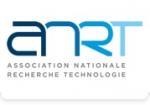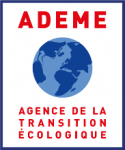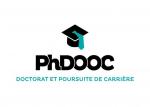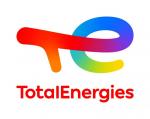Développement et caractérisation de matrices de sources TeraHertz cointégrées en technologie photonique Silicium et III-V // Development and Characterization of Terahertz Source Matrices Co-integrated in Silicon and III-V Photonics Technology
| ABG-133855 | Thesis topic | |
| 2025-10-16 | Public/private mixed funding |
CEA Grenoble INP
Grenoble
Développement et caractérisation de matrices de sources TeraHertz cointégrées en technologie photonique Silicium et III-V // Development and Characterization of Terahertz Source Matrices Co-integrated in Silicon and III-V Photonics Technology
- Electronics
Electronique et microélectronique - Optoélectronique / Sciences pour l’ingénieur
Topic description
La gamme TéraHertz (0.1–10 THz) suscite un fort intérêt pour l’imagerie et la spectroscopie (sécurité, santé, environnement, contrôle industriel) du fait de la transparence de nombreux matériaux en THz et des signatures spectrales caractéristiques. Cependant, les sources actuelles peinent à concilier puissance et accordabilité : les diodes et lasers à cascade quantique (QCL) délivrent plusieurs mW mais sur une bande étroite, tandis que les photodiodes III–V (photomixeurs) sont accordables sur de larges bandes mais limitées à quelques µW. Ce sujet de thèse vise à surmonter ces verrous en développant une matrice intégrée de sources THz. Le principe retenu est le photomélange de deux lasers à 1.55 µm dans des photodiodes InGaAs III–V, générant un courant THz modulé en phase et injecté dans des antennes adaptées.
La thèse débutera par l’étude expérimentale d’un réseau discret de 16 antennes THz (projet STYX) CEA-CTReg/DNAQ : installation du banc d’essai, mesures de cohérence de phase, de couplage optique, de lobes de rayonnement et d’interférences constructives. Ces expérimentations fourniront un socle scientifique pour la suite, à savoir la conception d’un réseau photonique intégré sur silicium. L’étudiant simulera l’architecture photonique (coupleurs, guides, modulateurs de phase, transitions Si/III–V) synchronisant plusieurs photodiodes InGaAs. Le prototypage comprendra la fabrication des circuits photoniques silicium (CEA-LETI) et des photodiodes/antennes THz en InP (III-V Lab ou, à confirmer, Heinrich-Hertz-Institut du Fraunhofer—HHI), suivie de leur intégration hybride (collage, alignement).
Cette thèse s’appuiera également sur une collaboration étroite avec le laboratoire IMS (Talence), reconnu au niveau national et international pour son expertise en photonique intégrée et en systèmes THz, apportant ainsi une complémentarité essentielle en modélisation optique, simulation électromagnétique et caractérisation expérimentale.
L’objectif final de cette thèse consistera à réaliser un prototype à quelques émetteurs (e.g. 4–16) dont la directivité et la puissance rayonnée sont accrues par les interférences constructives. La démonstration expérimentale validera le gain en portée et pénétration du rayonnement THz grâce à la combinaison puissance/accordabilité, ouvrant la voie à des systèmes d’imagerie THz de nouvelle génération.
------------------------------------------------------------------------------------------------------------------------------------------------------------------------
------------------------------------------------------------------------------------------------------------------------------------------------------------------------
The terahertz (THz) range (0.1–10 THz) is increasingly exploited for imaging and spectroscopy (e.g. security scanning, medical diagnostics, non-destructive testing) because many materials are transparent to THz radiation and have unique spectral signatures. However, existing sources struggle to offer both high power and wide tunability: electronic sources (diodes, QCLs) deliver milliwatts but over narrow bands, while photonic emitters (photomixers in III–V semiconductors) are tunable across broad bands but emit only microwatts. This thesis aims to overcome these limitations by developing an integrated matrix of THz sources. The approach is based on photomixing two 1.55 µm lasers in III–V photodiodes to generate a phase-coherent THz current coupled to THz antennas.
Initially, the PhD student will experimentally investigate an existing 16-element THz antenna array (STYX project) CEA-CTReg/DNAQ: setting up the test bench, measuring phase coherence, optical coupling, radiation lobes, and constructive interference. These experiments will provide a scientific foundation for the subsequent design of an integrated photonic array on silicon. The student will simulate the photonic architecture (couplers, waveguides, phase modulators, Si/III–V transitions) synchronizing multiple InGaAs photodiodes. Prototyping will include the fabrication of silicon photonic circuits (CEA-LETI) and THz photodiodes/antennas in InP (III-V Lab or, to be confirmed, Heinrich-Hertz-Institut of the Fraunhofer—HHI), followed by their hybrid integration (bonding, alignment).
This thesis will also rely on close collaboration with the IMS laboratory (Bordeaux), which is nationally and internationally recognized for its expertise in silicon photonics and THz systems. IMS will provide complementary expertise in optical modeling, electromagnetic simulation, and experimental characterization, reinforcing the multidisciplinary strength of the project.
Finally, the ultimate goal of this thesis is to develop a proof-of-concept demonstrator with a few phase-locked THz emitters (e.g. 4–16) will be produced and characterized, showing enhanced beam directivity and output power thanks to constructive interference. This demonstration will pave the way for large-scale THz source arrays with significantly improved range and penetration for advanced THz imaging systems.
------------------------------------------------------------------------------------------------------------------------------------------------------------------------
------------------------------------------------------------------------------------------------------------------------------------------------------------------------
Pôle fr : Direction de la Recherche Technologique
Pôle en : Technological Research
Département : Département Nouvelle-Aquitaine (CTREG)
Service : DNAQ
Date de début souhaitée : 01-09-2026
Ecole doctorale : Electronique, Electrotechnique, Automatique, Traitement du Signal (EEATS)
Directeur de thèse : DUSSOPT Laurent
Organisme : CEA
Laboratoire : DRT/DOPT//LI2T
La thèse débutera par l’étude expérimentale d’un réseau discret de 16 antennes THz (projet STYX) CEA-CTReg/DNAQ : installation du banc d’essai, mesures de cohérence de phase, de couplage optique, de lobes de rayonnement et d’interférences constructives. Ces expérimentations fourniront un socle scientifique pour la suite, à savoir la conception d’un réseau photonique intégré sur silicium. L’étudiant simulera l’architecture photonique (coupleurs, guides, modulateurs de phase, transitions Si/III–V) synchronisant plusieurs photodiodes InGaAs. Le prototypage comprendra la fabrication des circuits photoniques silicium (CEA-LETI) et des photodiodes/antennes THz en InP (III-V Lab ou, à confirmer, Heinrich-Hertz-Institut du Fraunhofer—HHI), suivie de leur intégration hybride (collage, alignement).
Cette thèse s’appuiera également sur une collaboration étroite avec le laboratoire IMS (Talence), reconnu au niveau national et international pour son expertise en photonique intégrée et en systèmes THz, apportant ainsi une complémentarité essentielle en modélisation optique, simulation électromagnétique et caractérisation expérimentale.
L’objectif final de cette thèse consistera à réaliser un prototype à quelques émetteurs (e.g. 4–16) dont la directivité et la puissance rayonnée sont accrues par les interférences constructives. La démonstration expérimentale validera le gain en portée et pénétration du rayonnement THz grâce à la combinaison puissance/accordabilité, ouvrant la voie à des systèmes d’imagerie THz de nouvelle génération.
------------------------------------------------------------------------------------------------------------------------------------------------------------------------
------------------------------------------------------------------------------------------------------------------------------------------------------------------------
The terahertz (THz) range (0.1–10 THz) is increasingly exploited for imaging and spectroscopy (e.g. security scanning, medical diagnostics, non-destructive testing) because many materials are transparent to THz radiation and have unique spectral signatures. However, existing sources struggle to offer both high power and wide tunability: electronic sources (diodes, QCLs) deliver milliwatts but over narrow bands, while photonic emitters (photomixers in III–V semiconductors) are tunable across broad bands but emit only microwatts. This thesis aims to overcome these limitations by developing an integrated matrix of THz sources. The approach is based on photomixing two 1.55 µm lasers in III–V photodiodes to generate a phase-coherent THz current coupled to THz antennas.
Initially, the PhD student will experimentally investigate an existing 16-element THz antenna array (STYX project) CEA-CTReg/DNAQ: setting up the test bench, measuring phase coherence, optical coupling, radiation lobes, and constructive interference. These experiments will provide a scientific foundation for the subsequent design of an integrated photonic array on silicon. The student will simulate the photonic architecture (couplers, waveguides, phase modulators, Si/III–V transitions) synchronizing multiple InGaAs photodiodes. Prototyping will include the fabrication of silicon photonic circuits (CEA-LETI) and THz photodiodes/antennas in InP (III-V Lab or, to be confirmed, Heinrich-Hertz-Institut of the Fraunhofer—HHI), followed by their hybrid integration (bonding, alignment).
This thesis will also rely on close collaboration with the IMS laboratory (Bordeaux), which is nationally and internationally recognized for its expertise in silicon photonics and THz systems. IMS will provide complementary expertise in optical modeling, electromagnetic simulation, and experimental characterization, reinforcing the multidisciplinary strength of the project.
Finally, the ultimate goal of this thesis is to develop a proof-of-concept demonstrator with a few phase-locked THz emitters (e.g. 4–16) will be produced and characterized, showing enhanced beam directivity and output power thanks to constructive interference. This demonstration will pave the way for large-scale THz source arrays with significantly improved range and penetration for advanced THz imaging systems.
------------------------------------------------------------------------------------------------------------------------------------------------------------------------
------------------------------------------------------------------------------------------------------------------------------------------------------------------------
Pôle fr : Direction de la Recherche Technologique
Pôle en : Technological Research
Département : Département Nouvelle-Aquitaine (CTREG)
Service : DNAQ
Date de début souhaitée : 01-09-2026
Ecole doctorale : Electronique, Electrotechnique, Automatique, Traitement du Signal (EEATS)
Directeur de thèse : DUSSOPT Laurent
Organisme : CEA
Laboratoire : DRT/DOPT//LI2T
Funding category
Public/private mixed funding
Funding further details
Presentation of host institution and host laboratory
CEA Grenoble INP
Pôle fr : Direction de la Recherche Technologique
Pôle en : Technological Research
Département : Département Nouvelle-Aquitaine (CTREG)
Service : DNAQ
Candidate's profile
Optique / Photonique / Optoélectronique (photonique intégrée, nanophotonique). Des compétences en simulation numérique (optique, électromagnétisme RF), en traitement du signal, et/ou une expérience en instrumentation expérimentale THz seront un atout.
Apply
Close
Vous avez déjà un compte ?
Nouvel utilisateur ?
More information about ABG?
Get ABG’s monthly newsletters including news, job offers, grants & fellowships and a selection of relevant events…
Discover our members
 Laboratoire National de Métrologie et d'Essais - LNE
Laboratoire National de Métrologie et d'Essais - LNE  ASNR - Autorité de sûreté nucléaire et de radioprotection - Siège
ASNR - Autorité de sûreté nucléaire et de radioprotection - Siège  CASDEN
CASDEN  ANRT
ANRT  MabDesign
MabDesign  MabDesign
MabDesign  Généthon
Généthon  ADEME
ADEME  ONERA - The French Aerospace Lab
ONERA - The French Aerospace Lab  Groupe AFNOR - Association française de normalisation
Groupe AFNOR - Association française de normalisation  Institut Sup'biotech de Paris
Institut Sup'biotech de Paris  Tecknowmetrix
Tecknowmetrix  Ifremer
Ifremer  Aérocentre, Pôle d'excellence régional
Aérocentre, Pôle d'excellence régional  SUEZ
SUEZ  PhDOOC
PhDOOC  TotalEnergies
TotalEnergies  Nokia Bell Labs France
Nokia Bell Labs France  CESI
CESI

